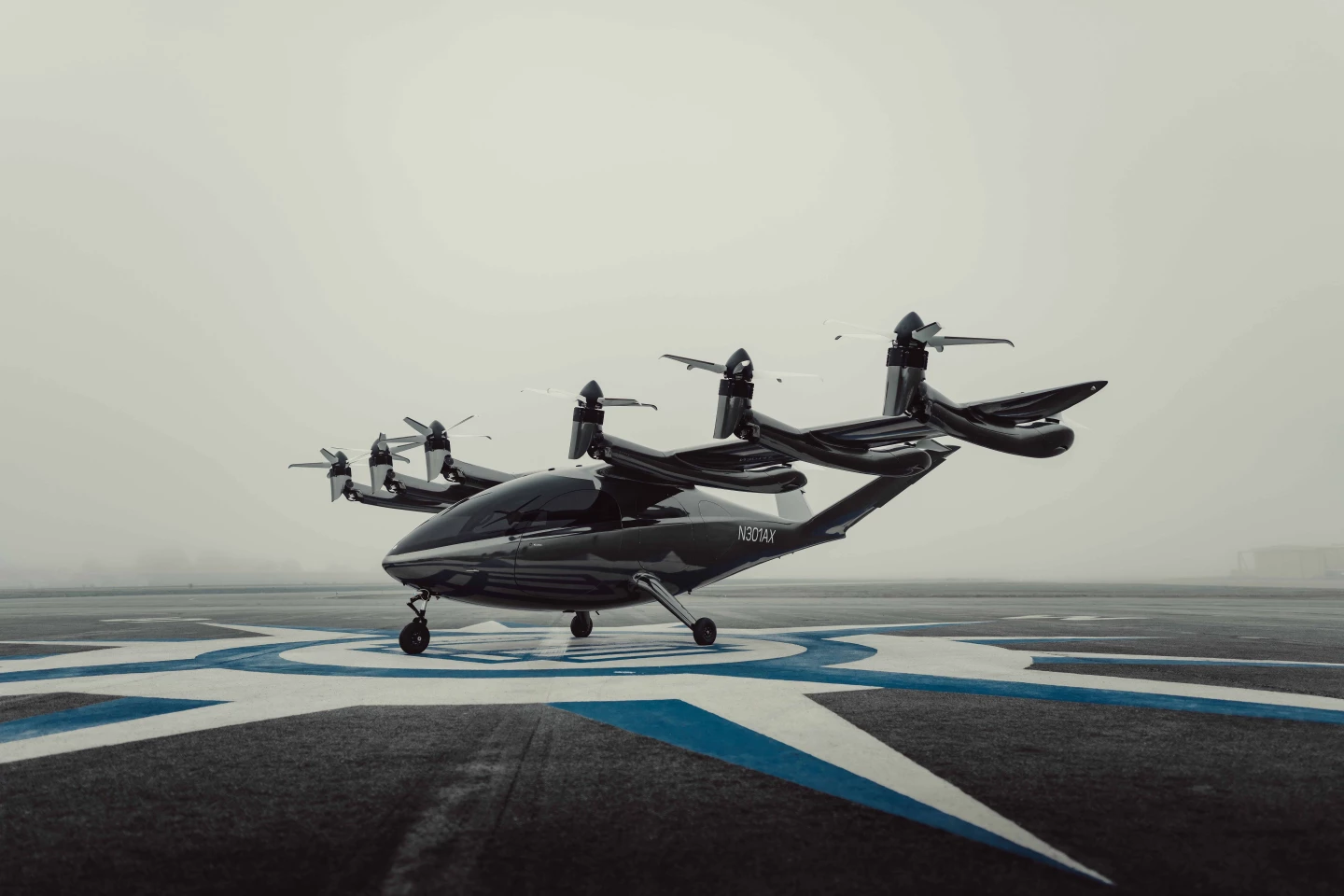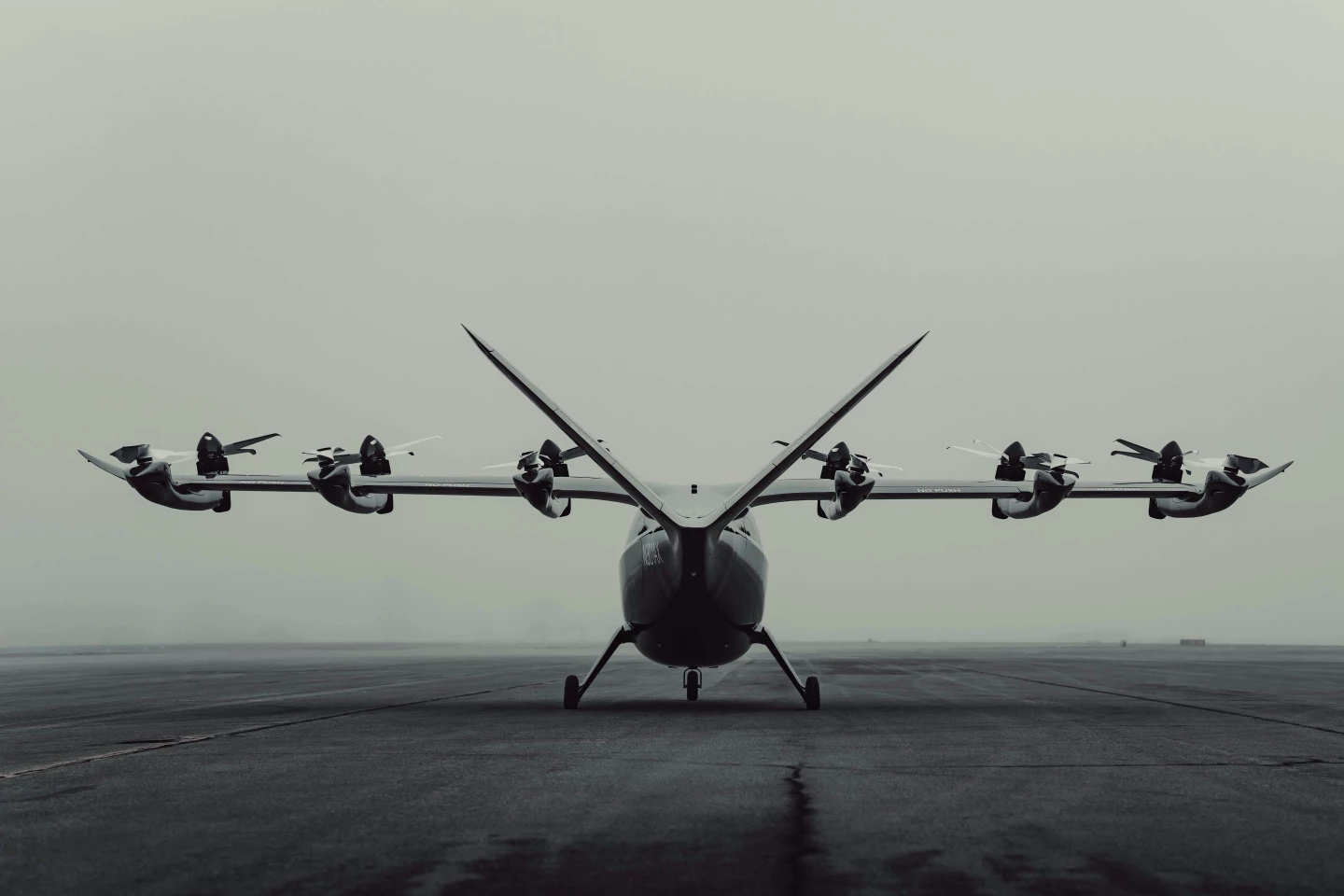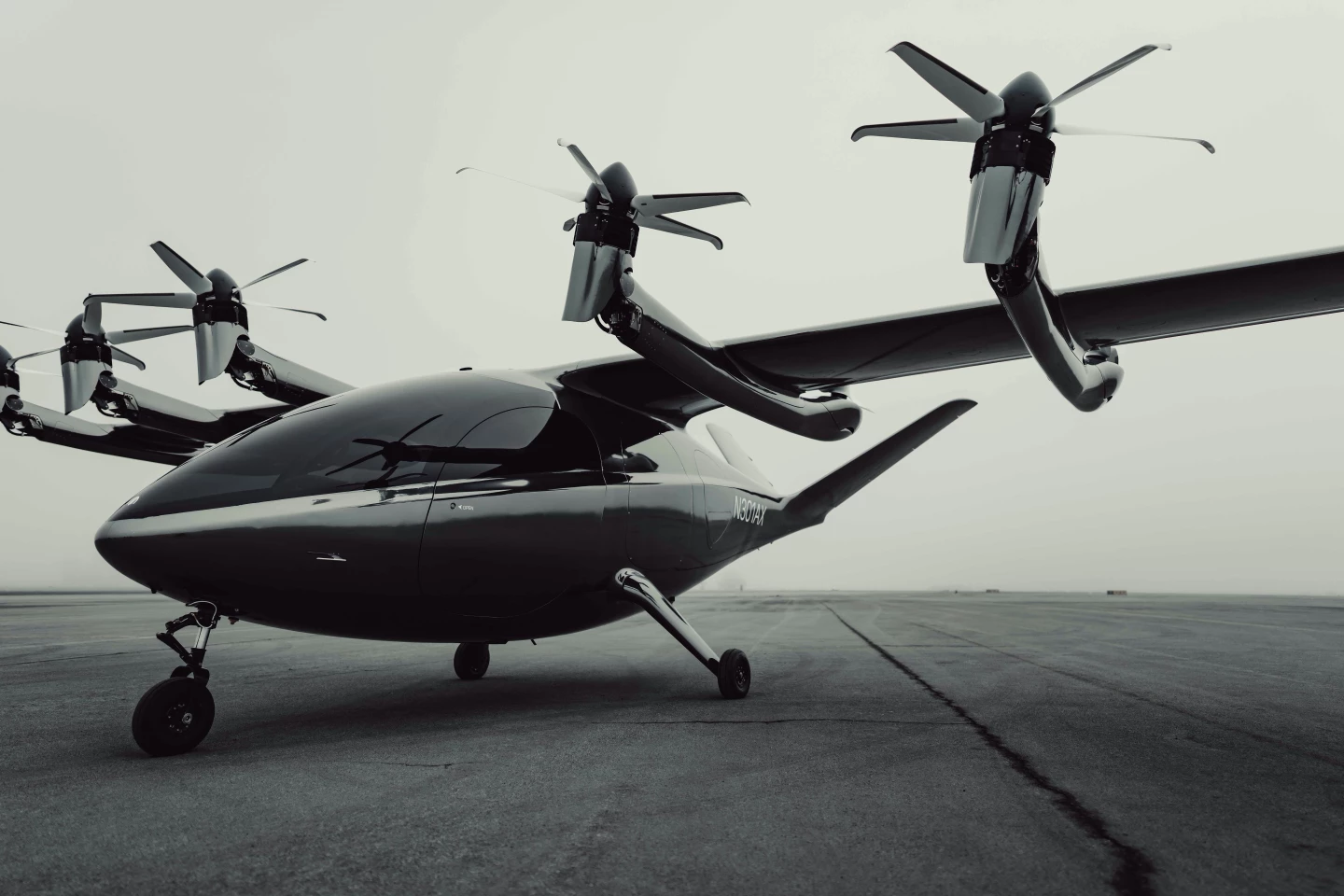The eVTOL age is just a couple of years from dawning. We caught up with Archer's Director of Business Development, Andrew Cummins, to learn what the first steps will look like when electric air taxis begin taking to the skies in 2024-25.
We've written at length about American company Archer and its prototype Maker eVTOL aircraft in the past. This is one of the better-funded startups racing to be certified and in mass production as the eVTOL wave begins to break in the USA within a couple of years. Indeed, according to the latest Advanced Air Mobility Reality Index, Archer is the sixth-ranked company in this space globally, with some US$856.3 million in funding behind its efforts to go along with a further billion dollars in conditional pre-orders from United Airlines.
The Maker itself is a neat-looking two-seat prototype, a fixed-wing plane with twelve electric props spread out on propulsion pods extending from its wings. The six five-bladed front props are able to tilt fully forward for efficient, wing-supported cruise mode, and the six two-blade props along the back of the wing will simply stop in a low-drag orientation when the VTOL phase of flight is over. Cruise speed on the final production design, to be revealed later this year, will be around 150 mph (240 km/h), range will be around 60 miles (97 km) on a full charge of its 75-kWh battery pack, and it promises to be vastly quieter and cheaper than a helicopter, like the rest of the eVTOL contenders.

Archer is getting stuck into flight testing the Maker prototype at the moment, with the company's sights firmly set on FAA certification and getting its entire operation production-ready. But once it gets the green light, it won't just be making aircraft for United; Archer, like Joby Aviation, is planning to run its own air taxi service. So initial production will roughly be split between the company's own operations and manufacturing the production aircraft for sale.
The company has chosen LA and Miami as its two launch cities – both have notoriously congested road networks and are poorly serviced by public transport. Archer's been using its own transport modeling software, Prime Radiant, to figure out where to station its initial vertiport operations in each city.
"We're focused on a crawl, walk, run approach," Cummins told us over a video call. "In the early years, 2024-25, we'll launch an initial network with something like five vertiports, just a handful, to prove the operation, prove the routes, prove the demand, and really show communities the benefits we can bring with this urban air mobility service. That'll hopefully give us the social license necessary to continue and scale that network."

The company has signed a deal to build rooftop vertiports on top of parking garages, opening up access to high-traffic urban locations, but Cummins says the service is likely to start out a little more conventionally. "In the United States, there are over 5,000 public use airports, and an even larger number of helipads. And some of these are under-utilized assets that we think will probably form a really strong foundation in the early years. We're also looking at other types of assets – rooftop decks, parking structures, and other things that we can retrofit. "
"But there's really not a whole lot of difference between an existing heliport and a vertiport of the future," he continued. "With very little retrofit and modification – you stick a charger on it, maybe a terminal facility for passenger comfort, maybe some line maintenance work – you can change the use of that facility. We have a lot of what we really need to get this industry off the ground."
So the process for Archer at this point is to pinpoint the optimal early launch locations with facilities that aren't far off being ready, then form the necessary commercial relationships and get the sites modified to suit the eVTOL air taxi model.

And then, it needs to create its own end-to-end transport service, as well as a customer-facing app to make the process as painless and simple as possible. Joby Aviation has a leg up in this regard, after its acquisition of Uber Elevate, but Archer doesn't see an advantage in being locked in with a particular last-mile ride-share service.
"Just like any app on your phone, we'll let you put in your destination, and we'll take it from there and plan a seamless journey for you, door to door," said Cummins. "That includes the 'first mile' getting you to the vertiport, and whatever mobility option you'd like for the last mile to your final destination. We're looking right across the landscape. Ride-share services are very interesting, but at the same time there are other options: bikes, multimodal transit systems, subways, trains – and really even walking. We're not about putting more cars on the road, it's more about how we can get people using existing forms of transport, how to keep people off the roads as much as we can."
"Right now, many cities in the United States have been built around vehicle ownership," he continued. "We've built a lot of concrete, but our population growth has surpassed the capacity of that concrete. We think there's a lot of potential there for urban air mobility to complement the existing infrastructure and maybe ease some of the congestion on our roads, while also really beginning the decarbonization of aviation."
Source: Archer Aviation








